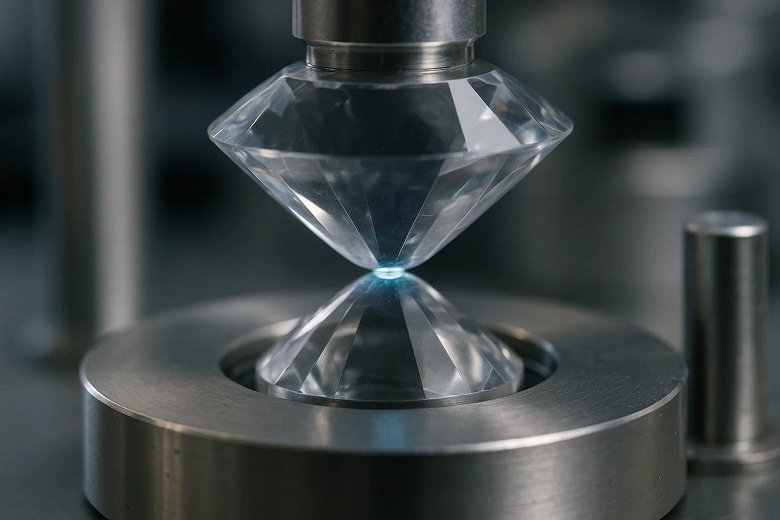The Korean Institute of Standards and Science (KRISS) has joined forces with an international team of physicists to announce the groundbreaking discovery of Ice XXI, a novel crystalline phase of ice formed under ambient temperature and ultra-high pressure. This discovery marks the 21st crystalline form of ice identified in scientific history, shedding light on the complex behaviors of water under extreme conditions.
Background and Significance
Water’s transformation into solid ice is a well-known phenomenon that generally occurs below freezing point. However, under increased pressure, freezing can occur even at room temperature. Historically, scientists have documented 20 other crystalline forms of ice, occurring at diverse combinations of temperature and pressure. The discovery of Ice XXI provides deeper insights into the transitional phases of water in conditions mimicking those found within planets and moons.
Technical Breakthroughs
At the heart of this breakthrough is the innovative dynamic diamond anvil cell (dDAC), developed by KRISS. This cutting-edge device utilizes a pair of diamonds, controlled by piezoelectric actuators, to compress water under precisely controlled high-pressure conditions. Unlike traditional methods, the dDAC significantly reduces mechanical shock, enabling compression within just 10 milliseconds. This rapid compression minimizes premature crystal formation, allowing researchers to push water to pressures necessary for the formation of dense ice phases without prematurely triggering crystallization.
In conjunction with the European XFEL’s free-electron X-ray laser, the team achieved microsecond-level temporal resolution, enabling real-time visualization of the crystallization process. This synergy has revealed multiple pathways for the transition of super-compressed water to its solid state, underpinning the formation of Ice XXI as an intermediary phase.
Broader Implications and Future Directions
The newly identified Ice XXI is notable for its unique crystalline structure, characterized by a flattened rectangular elementary cell. According to Dr. Lee Yoon-Hee, a leading contributor to the study, the density of Ice XXI is comparable to the high-pressure ice layers believed to exist beneath the surface of Jupiter’s and Saturn’s icy moons. This discovery promises to enhance our understanding of how life may emerge in the extreme conditions of space.
Project leader Dr. Lee Geun Woo highlighted the project’s success in capturing transient phenomena inaccessible with conventional tools, emphasizing the potential this technology holds for unraveling more mysteries of matter under extreme environments. The combination of dDAC and XFEL technology could spearhead new avenues in physical sciences exploration.
As researchers continue to map the diverse phases of water, the discovery of Ice XXI and the pathways of crystallization it reveals will inform more accurate modeling of extraterrestrial oceans, offering renewed tools for studying matter in the extreme.

Illustration: Sora





